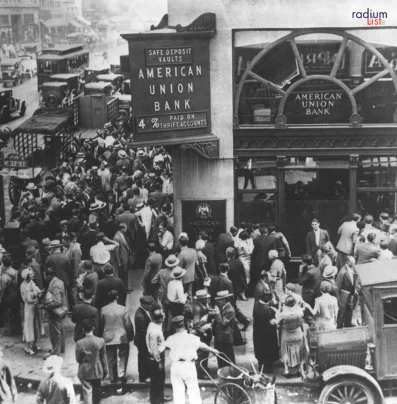History's Darkest Days: Top 10 Moments
In the rich tapestry of life, moments of joy and adversity are intricately woven. Embarking on a historical journey, we unravel the stories behind the top ten worst days that etched lasting imprints on the shared human narrative. Each event, a poignant thread in the fabric of time, reflects the resilience and vulnerabilities of humanity, shaping the course of our collective experience. From catastrophic events to profound tragedies, these moments transcend time, serving as poignant reminders of the fragility of existence. As we navigate through the annals of history, we encounter days that tested the human spirit, leaving scars that echo through generations. The exploration of these dark chapters offers insights into the capacity for both despair and resilience within the human soul.
History's Darkest Days: Top 10 Moments
Black Monday (1987): The Stock Market's Free Fall
In the annals of financial history the year 1987 is marked by a seismic event known as Black Monday, a cataclysmic stock market crash that reverberated across the globe
D-Day (1944): The Normandy Invasion
D-Day, a pivotal moment during World War II stands as a testament to Courage, Sacrifice and the relentless pursuit of freedom..
Black Monday (1987): The Stock Market's Free Fall
In the annals of financial history the year 1987 is marked by a seismic event known as Black Monday, a cataclysmic stock market crash that reverberated across the globe leaving an indelible mark on the economic landscape. This financial chaos was a result of a perfect storm of factors that unfolded with unparalleled speed and magnitude.
As the clock ticked on October 19, 1987, stock markets worldwide plummeted in a synchronized free fall. The triggers behind this historic crash were manifold, encompassing issues like overvaluation, trade imbalances, and the widespread use of computerized trading. The rapidity of the crash caught investors off guard, as the Dow Jones Industrial Average nosedived by a staggering 22%.
The aftermath of Black Monday was profound, reshaping the financial world and prompting a reassessment of risk management strategies. Governments and Financial Institutions scrambled to implement measures to prevent a repetition leading to the establishment of circuit breakers and other safeguards.
This event serves as a stark reminder of the inherent vulnerabilities within the financial system and the interconnections of global markets. Black Monday not only triggered a revisit of market implements but also contributed to the evolution of financial regulations and risk mitigation strategies that continue to influence the landscape of modern finance.
Decades after the crash the echoes of Black Monday persist as a cautionary tale underscoring the imperative for vigilance and adaptability in the dynamic realm of global finance.
D-Day (1944): The Normandy Invasion
D-Day, a pivotal moment during World War II stands as a testament to Courage, Sacrifice and the relentless pursuit of freedom. On the shores of Normandy, this historic event unfolded leaving an indelible mark on the history.
As the sun rose on June 6, 1944, the Allied forces launched a daring Amphibious Invasion specified Operation Overlord on the beaches of Normandy, France. The objective was clear to establish a foothold in Nazi occupied Europe and pave the way for the Liberation of Western Europe.
The beaches—Omaha, Utah, Gold, Juno and Sword—witnessed a fierce and bloody battle. The soldiers faced daunting obstacles from the harsh weather conditions to the fortified German defenses. The human cost was staggering with thousands of brave men making the ultimate sacrifice. The sands ran red with the blood of those who fought for the ideals of freedom and democracy.
Despite the heavy toll D-Day proved to be a turning point. The Allies successfully secured the beachheads marking the beginning of the end for Hitler’s regime. The Normandy invasion paved the way for the liberation of Western Europe and dealt a decisive blow to the Axis powers.
D-Day’s significance extends beyond military triumph. It symbolizes the Resilience of the human spirit and the collective will to stand against tyranny. The sacrifices made on those Beaches Echo through the annals of history reminding us of the price paid for the Freedoms we hold dear.
Chernobyl Disaster (1986): Catastrophe in the Soviet Union
The Chernobyl nuclear disaster, a chilling chapter in the history of nuclear energy unfolded on April 26, 1986 leaving an unforgettable mark on the world. In our disquisition, we peel back the layers of this disastrous event exposing the circumstances that led to the cataclysmal meltdown and its far- reaching environmental fate.
Situated in the Soviet Union, the Chernobyl Nuclear Power Plant in Pripyat, Ukraine became the center of a tragedy that shook the foundations of nuclear power. In the early hours of that April morning, a safety test gone crazy triggered a series of events that culminated in a disastrous explosion.
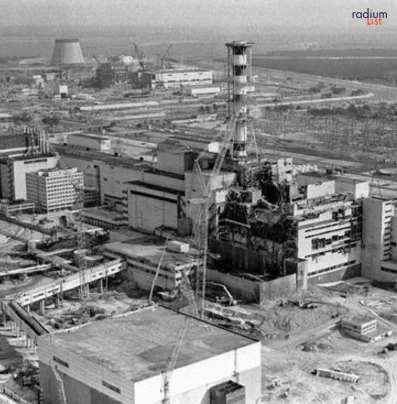
The explosion released an unknown quantity of radioactive material into the atmosphere creating an environmental disaster of unequaled magnitude. The immediate impact was felt in the form of a radioactive cloud that drifted across Europe leaving a trail of pollutants in its wake.
The human sacrifice was profound, with firefighters and factory workers exposed to murderous doses of radiation. The ghost city of Pripyat, formerly a vibrant community, turned into a creepy testament to the threats of unbounded nuclear power.
Decades later, the Chernobyl Exclusion Zone stands as a haunting memorial of the long- continuing consequences of the disaster. The area remains highly radioactive, and the wildlife within the zone bears the inheritable scars of the event.
The Chernobyl disaster serves as an exemplary tale, prompting a reevaluation of nuclear safety protocols worldwide. Its legacy underscores the need for responsible and watchful operation of nuclear technologies to help similar tragedies from recreating.
9/11 Attacks (2001): A Day of Infamy
The unforgettable imprint of September 11, 2001, forever altered the course of history, reshaping the geopolitical landscape and leaving an enduring mark on global knowledge. In this disquisition, we readdress the woeful events of the9/11 attacks, unravelling the complications and far- reaching consequences that unfolded on that cataclysmal day.
The morning of September 11 started like any other, but the coming out events would shatter the world’s sense of security. Terrorists hijacked four marketable aeroplanes, turning them into instruments of mass destruction. Two of these planes struck the iconic Twin Towers of the World Trade Center in New York City, causing their disastrous collapse. Another plane targeted the Pentagon, the symbol of American military power, while the fourth crashed in Pennsylvania after passengers bravely baffled the hijackers.
The mortal risk was stunning, with thousands of innocent lives lost and innumerous others ever changed. The attacks urged a seismic shift in global politics, leading to the United States’ protest of a War on Terror, marked by military interventions in Afghanistan and Iraq.
Beyond the immediate response,9/11 catalyzed profound changes in transnational relations, security programs, and the perception of terrorism. The event’s impact echoed through the times, impacting domestic legislation, surveillance measures, and shaping the converse on civil liberties.
As we reflect on the tragedy of September 11, we recognize its enduring significance—a stark reminder of the vulnerability of societies, the resilience of human spirit, and the complex interplay between security and freedom in our interconnected world.
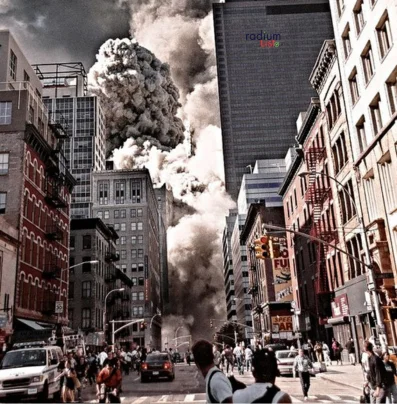
Black Death (1347-1351): The Plague's Devastation
The Black Death, an ominous specter of death and despair, etched its indelible mark on medieval Europe as one of history’s deadliest pandemics. This harrowing chapter, characterized by the relentless spread of the bubonic plague, transformed societies, leaving an enduring legacy of suffering and societal upheaval.
In the mid-14th century, a merciless contagion, carried by fleas infesting rats, descended upon Europe with unprecedented ferocity. The bubonic plague, named for the painful swellings, or ‘buboes,’ that marked its victims, ravaged communities, sparing neither the rich nor the poor.
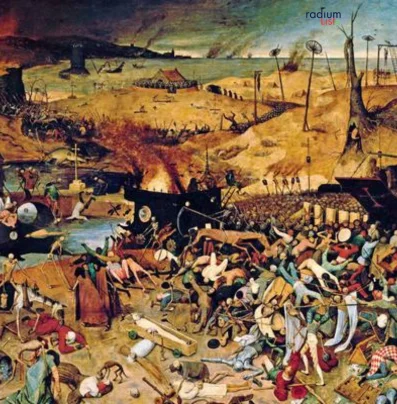
The impact was staggering—estimates suggest that the Black Death wiped out up to 50% of Europe’s population. Entire villages were decimated, and cities became ghostly landscapes haunted by the echoes of loss. The societal fabric unraveled as labor shortages empowered the surviving peasantry to demand better wages and living conditions.
The plague’s psychological toll was equally profound, fostering an atmosphere of fear and paranoia. Communities grappled with the existential dread of an unseen enemy, often turning to superstition and scapegoating, such as the persecution of Jewish communities.
Yet, amidst the devastation, the Black Death catalyzed significant societal changes. The scarcity of labor shifted the balance of power, setting the stage for the eventual decline of feudalism. Economic structures transformed and the seeds of the Renaissance were sown in the fertile soil of societal reevaluation.
As we delve into the annals of history, the Black Death emerges not only as a symbol of unfathomable loss but also as a catalyst for profound societal metamorphosis—an enduring testament to the resilience of the human spirit in the face of unimaginable adversity.
Hiroshima and Nagasaki Bombings (1945): End of World War II
The atomic bombings of Hiroshima and Nagasaki stand as haunting bookends to World War II, casting a long and doomy shadow over mortal history. In the waning days of the conflict, these ruinous events not only brought about the swift conclusion of the war but also directed in a new period fraught with ethical allegations and enduring consequences.
The mushroom clouds that rose over Hiroshima on August 6, 1945, and Nagasaki on August 9, 1945, heralded the coming of nuclear warfare and the unknown destructive power of mortal imagination. The bombings, orchestrated by the United States, exacted a stunning risk on the Japanese cities, taking in immediate death, wide desolation, and enduring health impacts for survivors.
The ethical considerations surrounding these bombings remain fiercely debated. Proponents argue that the decisive actions hastened the war’s conclusion, averting a prolonged conflict and saving lives. Detractors, however, condemn the bombings as morally indefensible, emphasizing the catastrophic loss of civilian lives and the ushering in of a perilous nuclear age.
The aftermath of Hiroshima and Nagasaki extends beyond the immediate devastation. The bombings catalyzed a global arms race, instilling a pervasive fear of nuclear annihilation during the Cold War. The ethical questions persist, challenging humanity to confront the moral complexities of wielding such destructive power.
As we reflect on this somber chapter in history, the atomic bombings of Hiroshima and Nagasaki force us to grapple with profound ethical quandaries, urging us to ensure that the lessons learned resonate through the corridors of time.
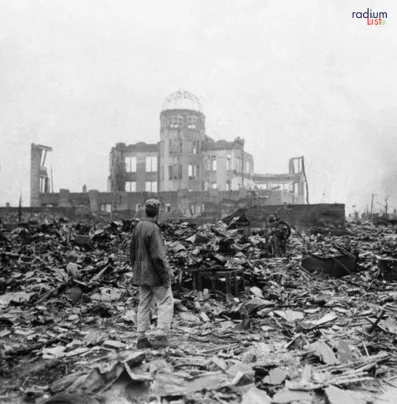
Pearl Harbor (1941): America Enters World War II
The threatening dawn of December 7, 1941, ever etched into history as the day of infamy, witnessed a surprise attack that thrust the United States cursorily into the pot of World War II. As the sun rose over the Pacific the tranquility of the nonmilitary base at Pearl Harbor was shattered by a ruinous assault orchestrated by the Empire of Japan.
In the preceding years, geopolitical pressures had been rising, with Japan seeking to expand its sphere of influence in Asia. Frustrated by profitable clearances assessed by the United States and fueled by Homeric ambitions, Japan constructed an audacious plan to cripple the Pacific Fleet and secure its indigenous dominance.
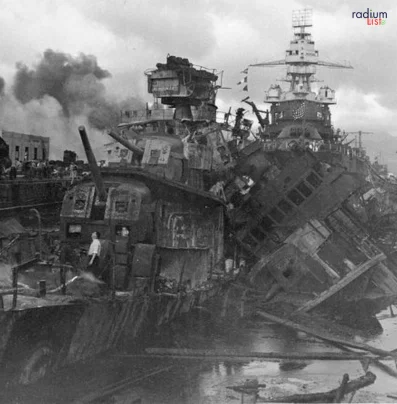
The meticulously coordinated attack unfolded with a ferocity that caught the American forces off guard. Waves of Japanese aircraft descended upon Pearl Harbor, bombarding battleships, cruisers, and aircraft in a relentless barrage. The devastation was catastrophic, with the USS Arizona succumbing to a catastrophic explosion, becoming a symbol of the profound loss.
The fate of the Pearl Harbor attack was seismic, propelling the United States into a war it had sought to avoid. President FranklinD. Roosevelt’s affecting declaration, delivered to an amazed nation, resonates through history’ December 7, 1941, a date which will live in disgrace.’
The repercussions extended far beyond the shores of Hawaii, reshaping the global dynamics of World War II. The United States, turned on by the attack surfaced as a redoubtable force committed to the defeat of despotism. The attack on Pearl Harbor remains a vital moment in history, illustrating the transformative power of a single event to alter the course of nations and define an era.
Assassination of Archduke Franz Ferdinand (1914): Sparking World War I
The echoes of a single gunshot in Sarajevo on June 28, 1914, set in motion a chain of events that would sound the world into the ocean of the Great War. The assassination of Archduke Franz Ferdinand, heir to the Austro- Hungarian throne, was a catalyst that unbraided the delicate geopolitical fabric of early 20th- century Europe
Archduke’s visit to Sarajevo became the stage for a fateful encounter. Gavrilo Princip, a Bosnian Serb nationalist fired the fatal shot extinguishing the life of the heir and his consort, Sophie, Duchess of Hohenberg.
The aftermath of the assassination unfolded swiftly as the Austro-Hungarian Empire, aggrieved and seeking retribution, issued an ultimatum to Serbia. The intricate web of alliances and treaties enmeshed Europe in a complex dance of mobilizations and declarations of war.
As nations aligned themselves with either the Allied or Central Powers, the geopolitical landscape shifted ominously. The Great War, characterized by trench warfare, technological brutality, and unprecedented casualties, reshaped the contours of the global order.
The assassination of Archduke Franz Ferdinand, originally a indigenous event, twisted into a conflagration that consumed empires and changed the course of history. The impacts of that fateful day in Sarajevo continue to resonate, emphasizing the profound impact of individual conduct on the fortune of nations.
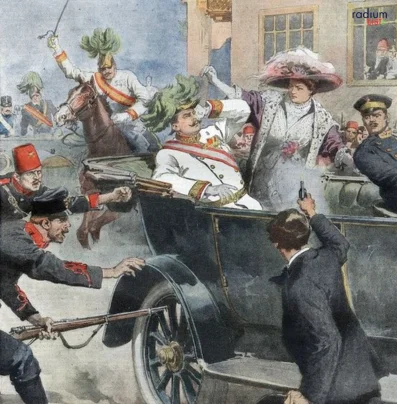
The Holocaust (1941-1945): Humanity's Darkest Chapter
The Holocaust, a dark chapter etched in the annals of mortal history, bears witness to the inconceivable brutality bought off by the Nazis during World War II. This orchestrated cause of systemic genocide, unequaled in its scale and horror, left an unforgettable mark on the collaborative ethics of humanity.
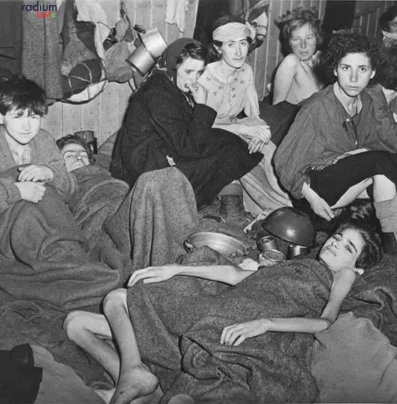
The roots of the Holocaust can be traced to the crooked philosophy of Adolf Hitler and his Nazi governance, which procreated cruelanti-Semitism. As Hitler arose to power in the 1930’s a series of differential laws were laid down disrobing Jews of their rights and subjecting them to persecution. The stage was set for a cataclysmic descent into the ocean of genocide.
The ministry of the Holocaust manifested in ghettos, attention camps, and decimation camps, where innocent lives were extinguished with ruthless effectiveness. The Holocaust wasn’t confined to the methodical murder of six million Jews; it extended to include millions of others, including Romani people, Poles, Soviet POWs, impaired individualities, and others supposed’ undesirable’ by the Nazis.
The profound impact of the Holocaust resonates through the corridors of history, serving as a stark memorial of the consequences of unbounded abomination and illiberality. The Post-war Nuremberg Trials sought to bring perpetrators to justice, yet the scars left by the Holocaust endure as a testament to the fragility of civilization in the face of unbounded spite.
The Great Depression (1929): Economic Despair
The Great Depression, an ominous chapter in global economic history cast a dark shadow over the world during the 1930’s, leaving an indelible mark on societies and reshaping the contours of economic thought. As the exuberance of the Roaring 20’s gave way to stark realities a confluence of factors triggered an unprecedented spiral into financial chaos.
At the heart of the Great Depression were multifaceted causes. The speculative frenzy in the stock market coupled with a rampant credit boom set the stage for a cataclysmic collapse. Currently, the ecological disaster of the Dust Bowl exacerbated the agricultural crisis, while protectionist trade policies aggravated the downturn. The interconnectedness of global economies amplified the impact, culminating in a perfect storm of economic calamity.
The repercussions of the Great Depression were staggering. Unemployment rates soared, banks crumbled, and industrial production plummeted. Communities were ravaged by poverty, homelessness, and despair. The social fabric strained under the weight of economic adversity, ushering in an era of unprecedented challenges and societal transformations.
From the crucible of hardship emerged enduring lessons. The Great Depression underscored the necessity of regulatory frameworks to curb speculative excesses, emphasized the importance of international cooperation during crises, and highlighted the pivotal role of fiscal and monetary policies as stabilizing forces.
While the scars of the Great Depression lingered, its aftermath witnessed societies forging a path toward resilience and adaptation. The lessons learned from this epoch continue to echo in the corridors of economic policy, serving as a poignant reminder of the imperative to evolve and fortify global economic systems in the face of an ever-evolving world.
